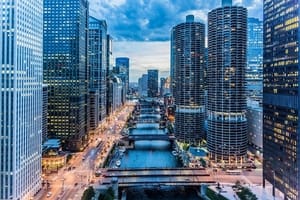Healthy Buildings Can Increase Rental Premiums And Productivity
- < AIA Finds Continuing Education Has Strongest Impact On Product Specification
- > How To Get Your Wall, Ceiling, Paint, and Flooring Products Specified For LEED v4
The COVID-19 pandemic has highlighted the importance of healthy buildings in the real estate market. The steps we take now to mitigate future risks will have major impacts for the safety and wellbeing of occupants. A recent report for the global commercial real estate industry illustrates how healthy buildings can increase rental premiums and occupant productivity.
In the new industry study A New Investor Consensus: The Rising Demand For Healthy Buildings, the authors review the impact of COVID-19 on demand for healthy buildings and what implications the sector’s response might have for future real estate investment decisions. The report captures the insights of real estate investors who represent $5.75 trillion assets under management.
The report showed that there has been an 87% increase for demand for healthy buildings over the past 12 to 24 months. Building owners and investors expect demand for healthy buildings to grow over the next three years. Nearly 90% of respondents plan to increase their company’s health and wellness strategies.
The majority of respondents (61%) indicated that they used healthy building certifications such as Fitwel and LEED for projects. The top four reasons listed for investing in healthy buildings included: COVID-19, tenant satisfaction, human health, and market differentiation. In addition, the report indicated rental premiums ranging between 4.4% to 7% for healthy buildings.
Studies have shown that healthy buildings improve employee satisfaction, lower absenteeism, and lower turnover. Investors in the report noted that failing to focus on health and well-being could result in buildings losing tenants and impact their bottom line. Of course, defining what a healthy building is may be critical to understanding the investor and tenant’s motivations and mindset.
The report lists several attributes of a healthy building including daylight in occupied spaces, tobacco-free indoor spaces, biophilic design, indoor vegetation, gym facilities, bike parking, views of nature, operable windows, and other sustainable features. Research indicates that building owners lease their healthy buildings quicker than their non-healthy counterparts.
The COVID-19 pandemic has accelerated the demand for healthy buildings. The demand for healthy buildings spans multiple continents and sectors. Residential and office are the main drivers for the demand for healthy buildings. Building certifications were noted as being a strong indicator of consistency for tenants. Fitwel and WELL were listed as the most prominent healthy building certifications, even over LEED.
How has COVID-19 affected your company? How do you think the pandemic will affect construction and the demand for healthy buildings in the future?
For more information or to discuss the topic of this blog, please contact Brad Blank





